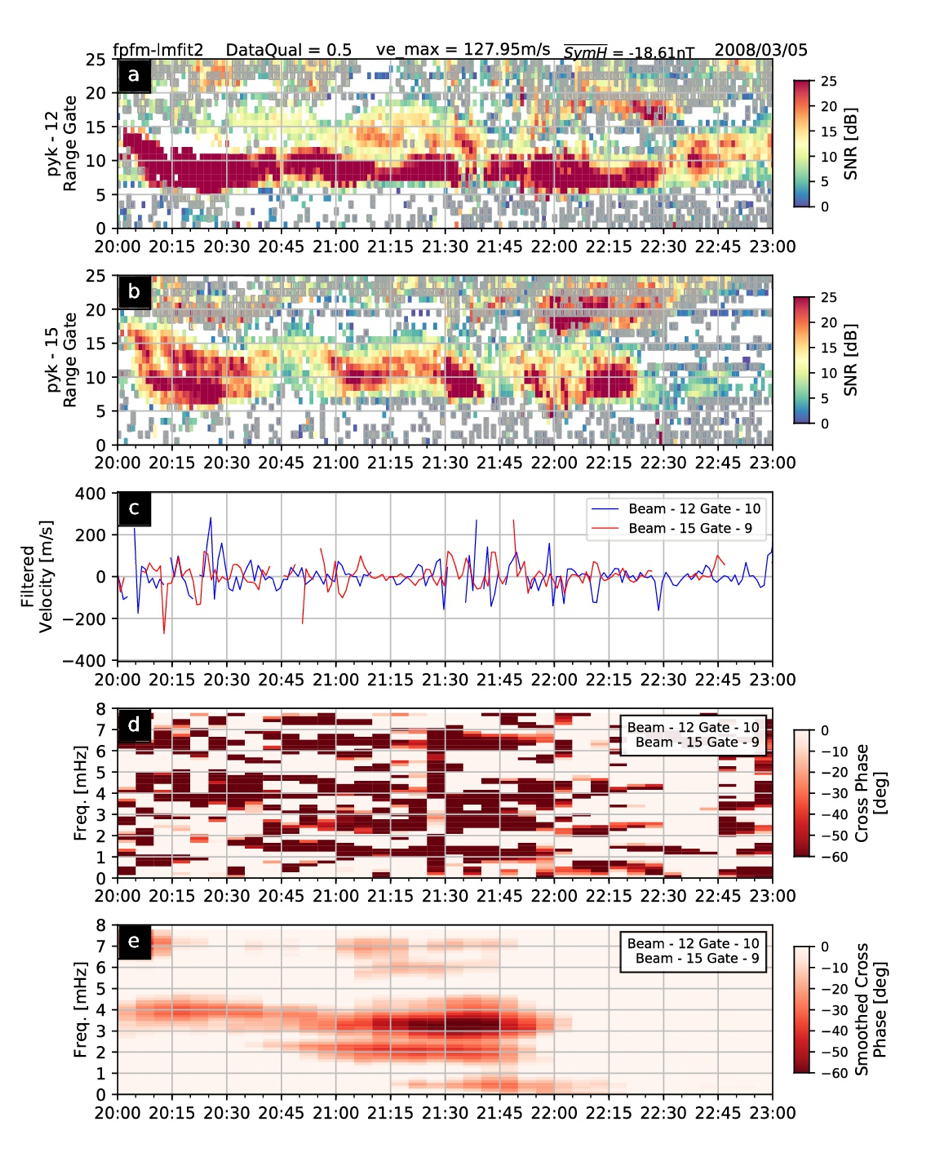MIST
Magnetosphere, Ionosphere and Solar-Terrestrial
Detecting the Resonant Frequency of the Magnetosphere with SuperDARN
by Samuel J. Wharton (University of Leicester)
The Earth’s magnetosphere is constantly being disturbed by ultralow frequency (ULF) waves. These waves transport energy and momentum through the system and can form standing waves on magnetospheric field lines. These standing waves have a resonant frequency which depends on the magnetic field strength and plasma distribution along the field line. The waves result in perturbations in the magnetic field and plasma in the ionosphere. These occur at the resonant frequency and can be directly observed with instruments on the ground. Being able to measure the resonant frequency can provide valuable information about the state of the magnetosphere.
Traditionally, this can be done by applying a cross-phase spectral technique to ground-based magnetometers. It works by finding the frequency where the phase change with latitude is most rapid. This occurs at the local resonant frequency.
The Super Dual Auroral Radar Network (SuperDARN) is a global consortium of 35 radars that observe radio waves backscattered from the ionosphere. The radars detect ULF waves by observing the movements of ionospheric plasma.
For the first time, we have applied the cross-phase technique to SuperDARN. These radars have a much greater spatial resolution and coverage and provide more detailed information than can be achieved with magnetometers alone. In this study, we have used some notable techniques, such as developing a Lomb-Scargle cross-phase technique for uneven data and exploiting an improved fitting procedure Reimer et al. (2018).
We have been able to apply these methods to several examples and validate the results with ground magnetometer estimations. When available, ionospheric heaters can be used to reduce the uncertainty in the backscatter location. However, the majority of SuperDARN data does not have a heater in the field of view and observes ‘natural scatter’. Figure 1 shows an example of the technique applied to natural scatter. The red band in Figure 1e lies at the resonant frequency. Hence, we can measure the resonant frequencies with and without an ionospheric heater.
This study demonstrates that SuperDARN can be used as a tool to monitor resonant frequencies and therefore the plasma distribution of the magnetosphere. This opens up a new application for the SuperDARN radars.
For more information, please see the paper below:
Wharton, S. J., Wright, D. M., Yeoman, T. K., & Reimer, A. S. (2019). Identifying ULF wave eigenfrequencies in SuperDARN backscatter using a Lomb-Scargle cross-phase analysis. Journal of Geophysical Research: Space Physics, 124. https://doi.org/10.1029/2018JA025859

Figure 1: This shows an example of the local resonant frequency being measured by SuperDARN. (a) and (b) show range-time-intensity plots for beams 12 and 15 of the Þykkvibær radar. (c) shows filtered line-of-sight velocities for range gates 10 and 9 on those beams respectively. (d) The cross-phase spectrum for data in (c). (e) The cross-phase spectrum from (d) smoothed.